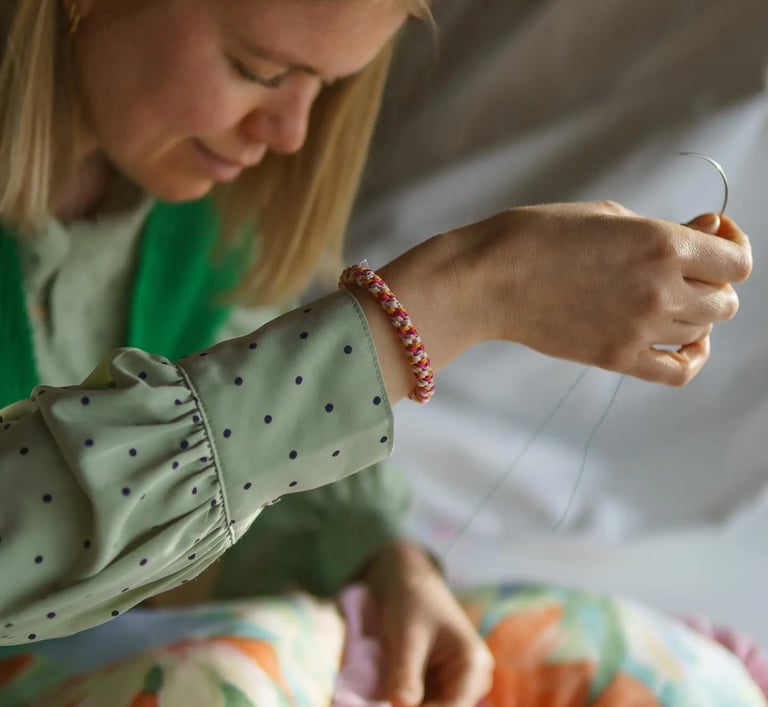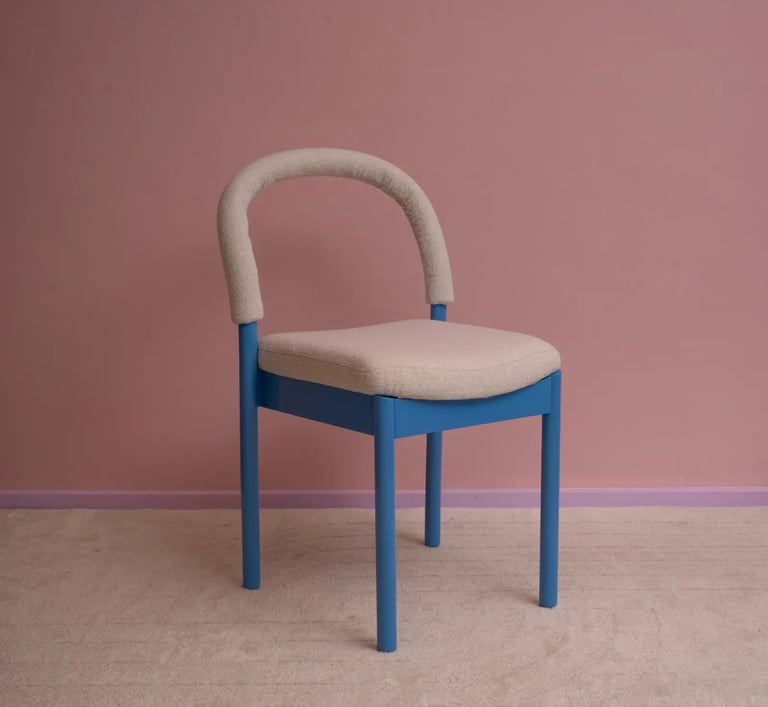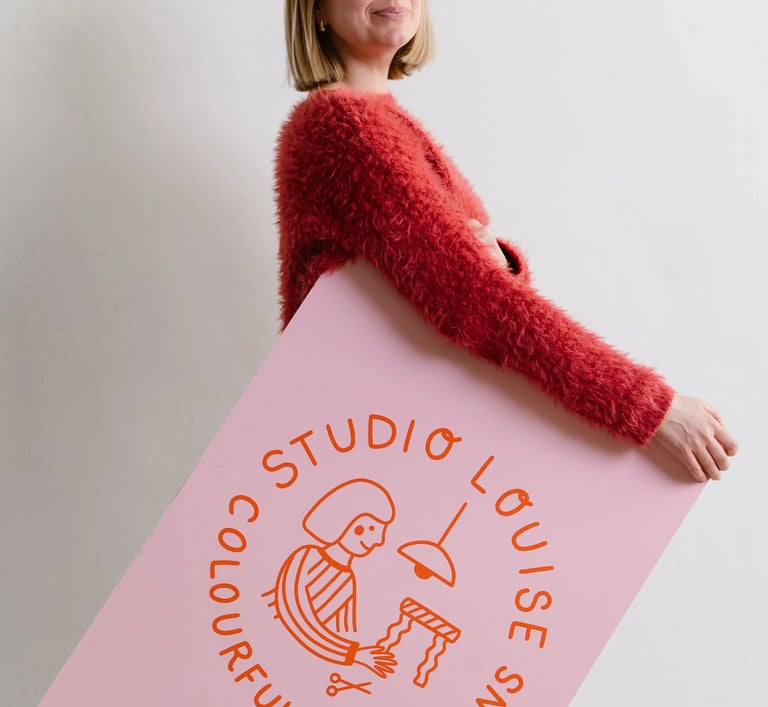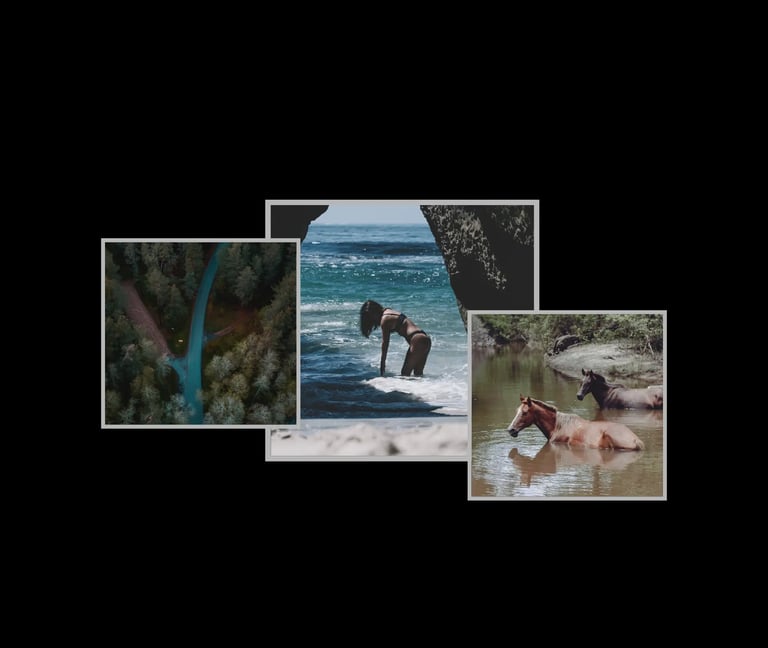Bold, Bright, and Sustainable: Inside Saskia Louise’s Upcycling World
PEOPLE & STORIES
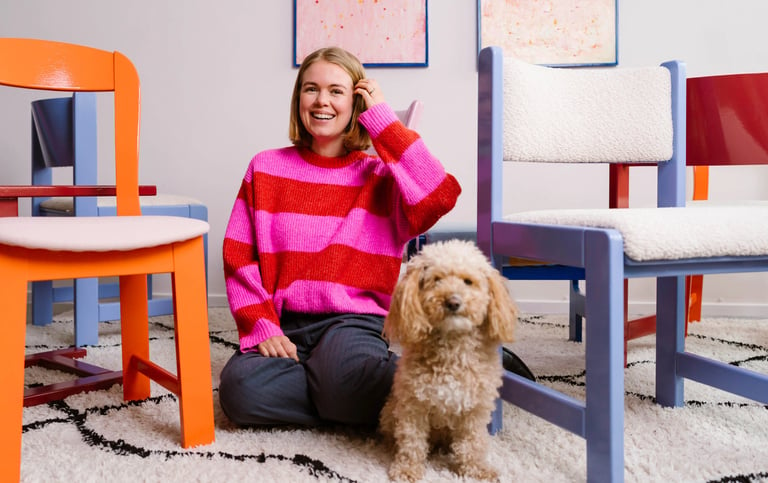

Name: Saskia Louise de Bruijn
Title/Profession: Sustainable Furniture Artist and Upcycler
Based in: The Netherlands
Instagram: @bystudiolouise
Known for: transforming discarded furniture into vibrant, joyful pieces, challenging the norms of fast consumption
In a world dominated by fast furniture and disposable design, Saskia Louise from Amsterdam is breathing new life into forgotten pieces. With a passion for bold colours, sustainability, and storytelling through design, Saskia transforms discarded furniture into vibrant, joyful works of art. Her journey from traditional furniture making to becoming a celebrated upcycler is as inspiring as the colourful creations she brings to life.
1. Let’s begin with your story. What first sparked your love for upcycling and transforming old furniture into vibrant works of art?
Upcycling has been part of me from a young age! At home, I was encouraged to look beyond appearances and focus on shapes, design, and materials. As a child, I was free to repaint my room or any piece of furniture I wanted to change. We never really talked about “buying new,” but rather about what could be transformed or refreshed. Later, I studied furniture making and design, initially working with new materials. However, I soon felt a pull towards something different. After completing upholstery courses, I gained a deep understanding of furniture construction. When I moved to Amsterdam in my mid-twenties, I was shocked by the amount of bulky waste lining the streets—so many items that could easily be given a second colorful life! That’s when I began applying my creativity and love for bold colors to upcycled furniture.
2. Your pieces are full of life—bold, colorful, and unapologetically joyful. Where does your creative vision come from? Has color always been so central?
Color is my purest form of creativity. It brings me immense joy! Just like the natural world—a green tree, blue sky, bright yellow sun—color lifts the spirit. Many of my color combinations come directly from nature, like a Dutch tulip with red and pink petals and a green stem—that’s the perfect palette for a chair. I find it sad that society often views bold colors as childish or inappropriate for adults. People are expected to tone down their style and interiors into muted tones like black, white, or grey for professionalism. I challenge this standard and want my work to celebrate color, playfulness, and joy at every age.
3. In a world dominated by flat-pack furniture, what do you think people miss when they overlook secondhand and vintage pieces?
Choosing only flat-pack furniture is a missed opportunity. I have Ikea pieces myself, but people often prioritise convenience over character. Vintage and secondhand pieces have quality, stories, and personality. They’ve lived through time and bring depth to a space. I believe the future of design lies in re-evaluating what already exists. It’s better for the environment and lets us pass on a unique story from owner to owner.
4. When you bring home a tired chair or dresser, how do you decide what it wants to become?
I see myself as an interior designer in the upcycling world. I don’t take every piece I find; I select those that fit my style and vision. Often, I instantly know how I want to transform a piece. I keep a folder of inspiring color combinations and shapes collected from nature, travels, and other creatives. Sometimes, pieces sit untouched for months until the right idea strikes. Occasionally, I rescue furniture simply to save it from destruction, even if I don’t yet know how I’ll upcycle it.
5. Your work feels tactile and intuitive. Do you see upcycling as storytelling or a form of rebellion against fast consumption?
Both! I’m amazed by how much people throw away that’s still usable. While fast fashion is widely discussed, “fast furniture” rarely is. Yet around 80% of discarded furniture is still usable. Through my “From Trash to Treasure” series, I aim to raise awareness that old furniture can have new life. Sometimes, giving something away can save it from destruction. My mission is to inspire people to choose vintage, secondhand, or quality-built furniture—better for the planet and creating truly unique interiors.
6. How has living and working in Amsterdam shaped your aesthetic and approach?
Amsterdam has exposed me to diverse cultures, lifestyles, food, music, and nature, all of which inspire me. The sheer volume of discarded furniture on the streets here is staggering compared to my hometown. This made me reflect on my own habits and the value of giving things a second life. It’s an ongoing learning process that shapes how I create and live sustainably.
7. What’s a common mistake people make when upcycling furniture for the first time?
It varies, but some helpful tips include documenting how a piece is assembled—photos or videos can make reassembly easier. Start simple: pick something that only needs a fresh coat of paint. Bring a photo to the hardware store and explain your project—they can guide you. And follow content creators who make upcycling accessible, like myself. The key is not to make it too complicated at first.
8. Your Instagram is a visual delight. How important is sharing your process online for building community?
Sharing the process is essential to building community and raising awareness. I want to show people that upcycling is not old-fashioned—it’s cool, creative, and great for the planet. I share both successes and failures to keep it real and inspire others. Showing the messy parts alongside the triumphs helps people feel empowered to try it themselves.
9. What inspires you right now—be it a book, material, place, or feeling?
I find inspiration everywhere—in colors, nature, and other designers. Sometimes inspiration hits suddenly; other times it takes time to develop. Both are part of the creative process.
10. What would you say to someone who claims they’re “not creative” but wants to start working with their hands?
I don’t believe anyone is “not creative.” Creativity is not just big ideas; it starts with doing. Many people think they’re not creative simply because they haven’t tried. Creativity can be found in everyday activities—cooking, music, crafting. I encourage everyone to just try, without aiming for perfection. Upcycling is perfect for this because secondhand materials carry their own stories. Imperfections add character and make the project unique.
